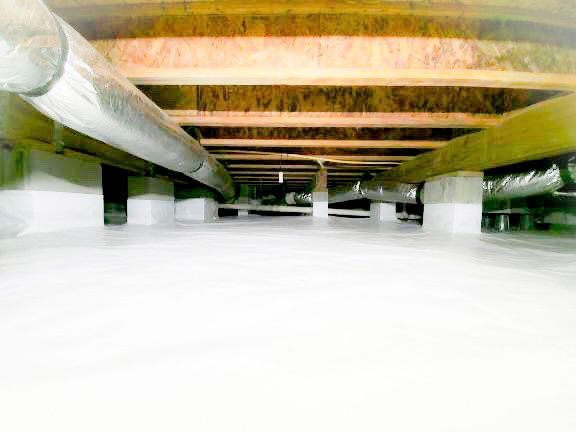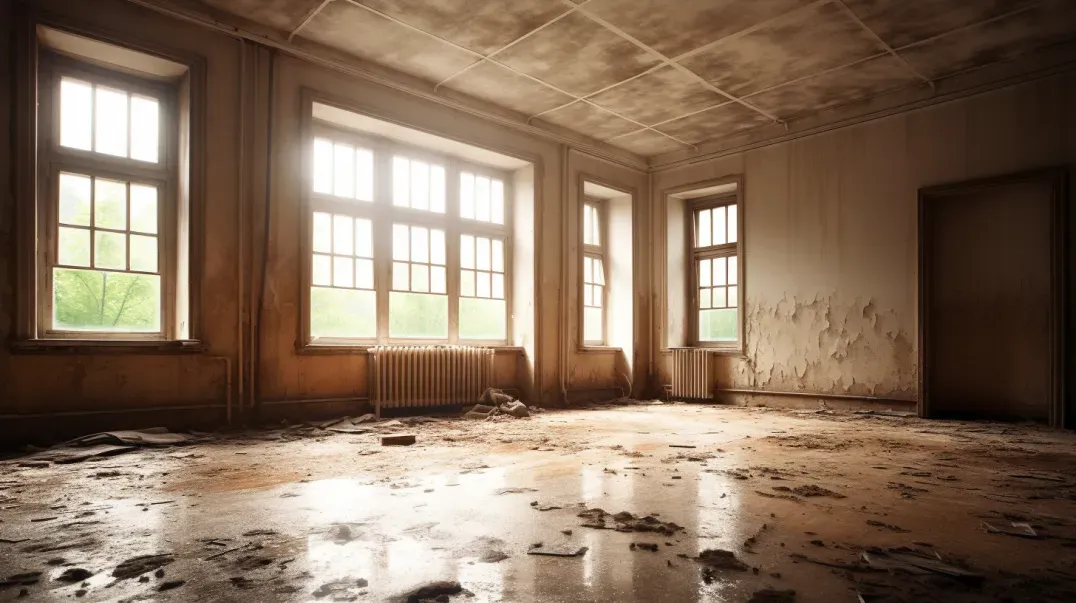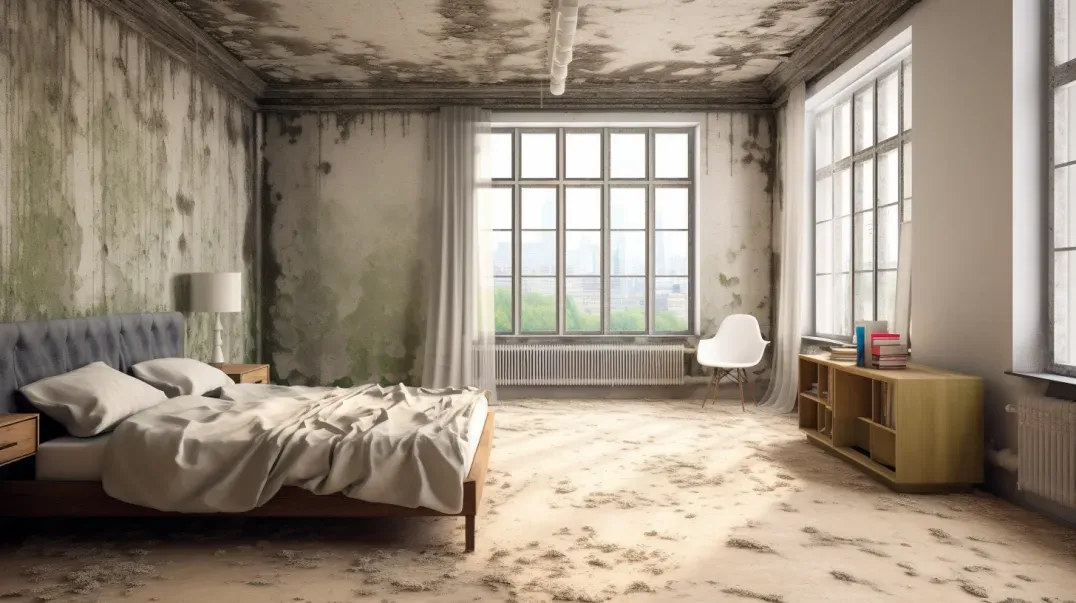Mold Smell Identification in Crawl Spaces
In the concealed corners of our homes, particularly within the often-overlooked crawl spaces, a silent intruder may be lurking – mold. This blog post delves into the intricate world of mold growth in these hidden areas, shedding light on a problem that, while out of sight, should never be out of mind. Mold, a persistent and potentially harmful organism, thrives in the damp, dark environments provided by crawl spaces, posing risks not only to the structural integrity of our homes but also to our health.
Recognizing the early signs of mold growth is crucial in mitigating its impact, and one of the earliest indicators can be as subtle as a change in the air – the scent. The significance of mold odor as an early detection sign is often underestimated. This post aims to elevate your understanding of this critical warning signal, empowering you with knowledge to identify and address mold issues before they escalate into more significant problems.
Join us as we explore the conditions that foster mold growth in crawl spaces, understand the implications of its presence, and learn how to use our senses, particularly our sense of smell, to detect and tackle this hidden hazard effectively. By the end of this article, you'll be equipped with essential insights to safeguard your home and health against the unseen threat of mold.
Understanding the Nature of Mold Smell
Mold, an insidious and often hidden threat in our homes, particularly in crawl spaces, announces its presence in a subtle yet distinct manner – through its smell. Understanding the nature of mold smell is crucial in early detection and effective remediation. This section explores the characteristics of mold odor and the factors that influence its intensity and detectability.
What Does Mold Smell Like?
Mold emits a characteristic scent that is often described as musty and earthy. This odor is a telltale sign of mold growth, even when it's not visible. The smell is reminiscent of damp, stale air, similar to the scent of wet socks or rotting wood. It's a distinctive aroma that can vary in intensity but is usually unmistakable once identified. This musty odor is a result of microbial volatile organic compounds (mVOCs) produced by the mold as it grows and digests materials in your home. Understanding and recognizing this scent is the first step in identifying potential mold issues, especially in areas like crawl spaces where visual detection might not be straightforward.
Factors Influencing Mold Odor
The intensity and perceptibility of mold odor can be influenced by various environmental factors within crawl spaces. These include:
- Humidity Levels: Higher humidity can amplify the musty smell, as mold thrives in moist environments.
- Ventilation: Poor ventilation in crawl spaces can trap mold spores and the odors they produce, intensifying the smell. Conversely, good ventilation might dilute the odor, making it less noticeable.
- Temperature: Warmer temperatures can accelerate mold growth and increase the production of mVOCs, leading to a stronger odor.
- Material of Growth: Different materials, like wood, carpet, or insulation, can affect the strength and quality of the mold smell.
- Extent of Mold Growth: A larger area of mold growth will typically produce a more potent odor compared to a smaller, contained area.
Recognizing these factors can help homeowners and professionals assess the severity of a mold problem in crawl spaces and take appropriate action. It's important to note that while the absence of a musty smell doesn't necessarily mean the absence of mold, its presence is a clear indicator that should not be ignored.
Identifying Mold Smell in Crawl Spaces
Detecting mold in crawl spaces can be challenging due to their often inaccessible and overlooked nature. However, the smell of mold can serve as a critical indicator. This section guides you through identifying mold smell in crawl spaces, highlighting common signs accompanying this odor and differentiating it from other household smells.
Common Indicators of Mold Presence
Alongside the distinct musty odor, several signs may indicate the presence of mold in crawl spaces:
- Visible Mold Growth: While mold is not always visible, any visible signs, such as black, green, or white speckled patches on surfaces, strongly suggest its presence.
- Excessive Humidity: Crawl spaces with high humidity levels are breeding grounds for mold. A consistently damp environment can accelerate mold growth.
- Water Damage: Stains or discolorations on walls, floors, or ceilings in crawl spaces can be a result of water leaks or flooding, which often lead to mold growth.
- Condensation: Signs of condensation, such as water droplets on pipes or crawl space surfaces, can indicate a high moisture level conducive to mold.
- Health Symptoms: Unexplained allergic reactions or respiratory issues when in or near the crawl space can be a sign of mold exposure.
Identifying these signs, especially when accompanied by a moldy smell, is crucial in recognizing a potential mold problem in crawl spaces.
Distinguishing Mold Smell from Other Odors
Mold odor can sometimes be confused with other common household smells. Here's how to distinguish it:
- Mold vs. Mustiness: While both smells are similar, mustiness often comes from long-term lack of air circulation, whereas mold has a more pungent, earthy scent.
- Mold vs. Mildew: Mildew, often found in bathrooms, has a lighter, more surface-level smell compared to the deeper, more robust odor of mold.
- Mold vs. Rotting Wood: Rotting wood has a more singular, decaying wood scent, whereas mold encompasses a broader, damp, and stale smell.
- Mold vs. Pet Odors: Pet odors are usually more localized and identifiable, whereas mold has a pervasive, all-encompassing scent.
- Mold vs. Sewage Gas: Sewage gas has a sulfuric or rotten egg smell, distinctly different from the earthy, musty odor of mold.
Understanding these nuances in smell can aid significantly in correctly identifying mold presence in crawl spaces, leading to timely and effective remediation.
Health Implications of Mold Exposure
Mold exposure in environments like crawl spaces can have significant health implications. Understanding these effects is crucial for homeowners, as early detection and remediation can mitigate these health risks. This section explores both the short-term and long-term health effects associated with mold exposure.
Short-term Health Effects
Immediate health symptoms related to mold exposure can vary depending on individual sensitivity and the extent of exposure. Common short-term effects include:
- Allergic Reactions: Many individuals experience allergic responses to mold, such as sneezing, runny nose, red eyes, and skin rash.
- Respiratory Issues: Mold can cause respiratory problems, including coughing, wheezing, and difficulty breathing, particularly in asthmatic individuals.
- Irritation: Exposure to mold can cause irritation of the eyes, skin, nose, throat, and lungs, even in non-allergic individuals.
- Headaches: The presence of mold can trigger headaches in some people, often due to allergic reactions or the strong musty odor.
- Fatigue: Unexplained fatigue and a general feeling of malaise can sometimes be attributed to mold exposure, especially in damp indoor environments.
It's important to note that these symptoms can vary widely among individuals, and not everyone exposed to mold will experience these effects.
Long-term Health Risks
Prolonged exposure to mold can lead to more serious, long-term health issues, particularly in individuals with weakened immune systems or chronic lung illnesses. These risks include:
- Respiratory Infections: Long-term exposure to mold can lead to respiratory infections and conditions like bronchitis and pneumonia.
- Asthma Development: People exposed to mold for extended periods, especially children, may develop asthma or experience worsening asthma symptoms.
- Allergic Reactions: Continuous exposure can exacerbate allergic reactions, leading to more severe symptoms over time.
- Immune System Suppression: Mold exposure can suppress the immune system, making individuals more susceptible to various infections and illnesses.
- Toxic Effects: Certain types of molds produce mycotoxins that can be harmful when inhaled over a long period, potentially leading to toxic effects.
It's crucial to address mold issues promptly to prevent these long-term health risks. Regular inspection of areas prone to mold growth, like crawl spaces, and immediate remediation if mold is detected, are essential steps in protecting health.
Investigating and Locating Mold in Crawl Spaces
Detecting mold in crawl spaces is a crucial aspect of home maintenance and health protection. This section provides a comprehensive guide on how to conduct a thorough inspection for mold in crawl spaces and introduces essential tools and techniques for effective mold detection.
Conducting a Thorough Inspection
A systematic approach is key to effectively inspecting crawl spaces for mold. Here's a step-by-step guide:
- Safety First: Before entering a crawl space, ensure you have the proper safety gear, including gloves, a mask, and protective clothing.
- Visual Inspection: Begin with a visual examination of the crawl space, looking for visible signs of mold, water damage, or condensation.
- Smell Test: Pay attention to any musty or moldy odors, as these can be indicators of hidden mold growth.
- Check for Moisture: Inspect for any signs of moisture, as mold thrives in damp environments. Look for wet spots, water stains, or condensation on surfaces.
- Examine Ventilation: Ensure that the crawl space is adequately ventilated, as poor ventilation can lead to moisture buildup and mold growth.
- Inspect Insulation and Wood: Check insulation and wooden structures for any signs of mold or rot, as these materials are particularly susceptible to mold.
- Document Findings: Take notes and photographs of any signs of mold or moisture for reference and possible future action.
Tools and Techniques for Mold Detection
While a visual inspection and smell test are essential first steps, specialized tools can enhance your ability to detect mold:
- Moisture Meters: These devices measure the moisture level in various materials, helping to identify potential mold growth areas.
- Thermal Imaging Cameras: Thermal cameras can detect temperature variations in walls and floors, indicating potential moisture problems that are not visible to the naked eye.
- Mold Testing Kits: These kits can be used to collect mold samples from surfaces or the air, which can then be sent to a lab for analysis.
- Borescopes: A borescope, a flexible camera, can be inserted into small or hard-to-reach areas to look for mold growth that is not visible during a standard inspection.
Using these tools can significantly improve the accuracy of your mold investigation, helping to locate hidden mold growth and address it effectively.
Professional Mold Inspection and Testing
While DIY methods can be effective for initial mold detection, there are circumstances where professional expertise is crucial. This section provides guidance on when to call in professional mold inspectors and what to expect from professional mold testing procedures.
When to Call in the Experts
Knowing when to seek professional assistance is key in effectively managing mold issues. Consider calling in experts in the following situations:
- Widespread Mold: If mold covers a large area (typically over 10 square feet), professional help is recommended to ensure complete removal.
- Hidden Mold: If you suspect mold is present but cannot find it, professionals can use advanced tools to detect hidden growth.
- Health Concerns: If occupants experience health issues that might be related to mold, a professional can accurately assess the situation.
- Post-Water Damage: Following significant water damage, professionals can ensure that all mold growth, visible or not, is addressed.
- Real Estate Transactions: Before buying or selling a property, a professional mold inspection can identify potential issues.
- Recurring Mold: If mold returns after DIY removal, this could indicate a deeper issue that requires professional assessment.
What to Expect from Professional Mold Testing
Professional mold testing goes beyond basic detection, offering a comprehensive assessment of the mold situation. Here’s what to expect:
- Initial Assessment: Professionals start with a thorough inspection of your property, using advanced tools to detect mold and moisture.
- Air Sampling: Experts may take air samples to determine the concentration of mold spores in your home’s air, which can be crucial for health and remediation planning.
- Surface Testing: This involves taking samples from surfaces to identify the specific types of mold present.
- Detailed Report: After testing, you'll receive a detailed report outlining the extent of the mold issue, the types of mold found, and the recommended remediation strategies.
- Expert Consultation: Professionals will discuss the findings with you, providing guidance on the next steps and answering any questions you may have.
- Remediation Plan: If necessary, they will develop a comprehensive plan to safely and effectively remove the mold and prevent future growth.
Professional mold testing provides a level of detail and accuracy that is essential in certain situations, ensuring that mold issues are fully understood and properly addressed.
FAQs
Contact Lowcountry Crawlspaces Today!
Lowcountry Crawlspaces will do everything we can to ensure your experience with us is excellent.
Request A FREE Estimate
CHECKOUT RECENT POST



Schedule Your FREE Crawl Space Evaluation Today
There Is No Crawl Space Job We Can’t Fix!




